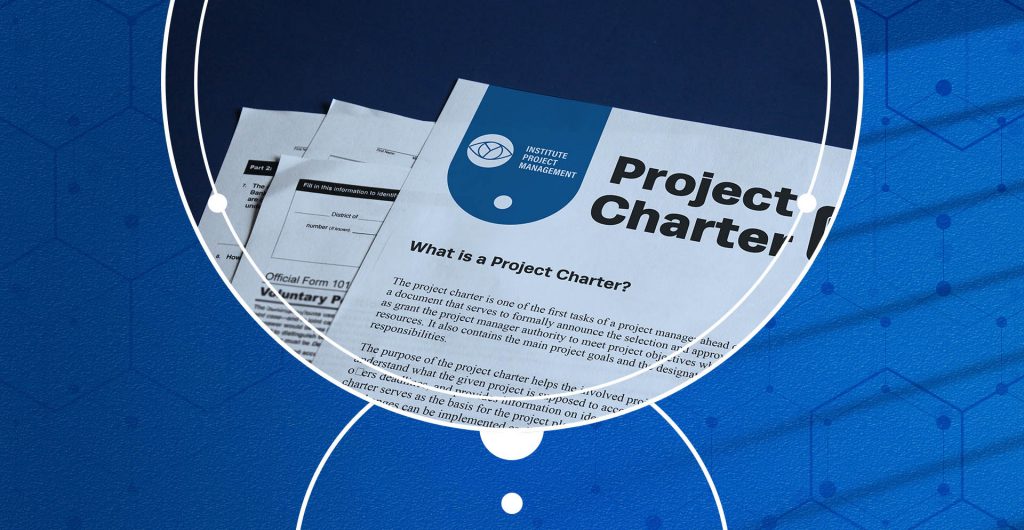Your star closer has just made a massive sale, and handover to fulfilment is a farce. The customer waits three weeks for onboarding that can be done in three days. By the time they’ve resolved, they’re having second thoughts, and your team is burnt out through firefighting. Ring a bell? You’re not alone. 25% of SMB owners name clash flow issues as their biggest challenge, yet the actual culprit more often than not is not revenue- It is day-to-day operational mayhem that drains money, infuriates clients, and drains your staff.
The businesses thriving in 2025 have cracked a simple math problem: they’ve stopped viewing business processes as mundane paperwork and started treating them as algorithms driving their operations, and the impact is groundbreaking.
The Real Cost of Flying Blind
Most SMB executives have their dollar amounts to the penny, but ask them how many handoffs occur between sale and delivery or how long their customer onboarding process takes, and you’ll get looks of confusion. This operational unawareness costs. Consider the hidden costs accumulating in your business right now:
Time Drain
The average small to medium-sized business (SMB) wastes over 570 hours annually due to administrative inefficiencies. That is 14 weeks of productivity gone. For a 20-member team earning $50,000, that is $ 275,000 in lost productivity annually.
Error multiplication
Without repeatable processes, errors multiply. A quick data entry error at the start of your customer cycle can snowball through invoicing, fulfilment and support, requiring several employees to fix what could have been prevented.
Talent Drain
Your talent is being wasted on routine work rather than on strategic pursuits. 79% of SMBs now emphasise managed services partly because staff inside are mired in operational quicksand rather than driving growth.
Erosion of customer experience
Broken processes yield broken experiences. Your customer is treated with white gloves, but another falls through the cracks, not because you’re relying on individual heroics, but rather on system-level excellence.
The metrics are sobering: companies in financial distress generally have 15-25% higher operating costs, 40% longer customer acquisition cycles, and turnover rates that would bring a tear to your CFO’s eyes.
What Makes Business Processes Work
That is where most business advice goes astray. It focuses on industry-specific best practices, while real innovation lies in algorithmic thinking about how work flows through your firm.
A business process is simply a reusable sequence of steps that transforms inputs into valuable outputs. As with software, it should be logical, practical, and crafted to make nice decisions when handling edge cases. Best performing SMBs in 2025 structure processes like software architecture:
Start with the end outcome
What specific outcome are you trying to achieve? ”Better customer service” is too vague. ”Reduce support ticket response time to under 24 hours” is measurable and tangible.
Map and the current reality
Document what occurs, not what should happen. Most processes exist in people’s minds with dozens of unspoken variations and compromises.
Find the bottlenecks
Where is work piling up? Where do handoffs fail? These bottleneck points dictate your overall system performance.
Design for systems, not superheroes
Great processes work regardless of who’s operating them. If your superstar goes out of town for a few days and everything falls apart, you do not have a process; you have a dependency.
Make it a feedback loop
How do you know the process is working? What metrics indicate success or failure? Without a metric, you cannot improve.
The Systematic Implementation Framework
Based on implementations in many dozen businesses, this is the framework that works every time:
Phase 1: Process Archaeology (Week 1-2)
Don’t start by developing new processes. Start by observing what you do today. Walk through behind your staff on real transactions. Document every step, every handoff, every decision point. Most companies discover that they have 3-5 different versions of the same process running simultaneously.
Insight: The discrepancy between your assumed and actual processes is where cash disappears.
Phase 2: Constraint Analysis (Week 2-3)
Measure your real bottlenecks in facts, not assumptions. Track cycle times, defect rates, and handoffs to ensure optimal performance. Often, the apparent problem (slow shipping) obscures the fundamental constraint (sloppy sales specification.
Tool: Create a simple spreadsheet to track each transaction throughout your process. Within two weeks, patterns emerge that reveal thousands of dollars’ worth of yearly optimisation opportunities.
Phase 3: Redesign with Logic (Week 3-4)
This is where the payoff of systematic thinking lies. Instead of fixing problems, redesign the entire flow with decision trees and a logical sequence. Ask: What information do we need at every step? Who’s the best qualified to make every decision? How do we eliminate handoffs?
Framework: Every process step must deliver value for the customer, provide value for the business, or be eliminated. Anything else is a waste.
Phase 4: Technology Integration (Week 4-6)
Implement automation tools only now. 75% of SMBs are investing in AI solutions, but the companies achieving 353% ROI (like those using Microsoft 365 Copilot) are automating well-engineered processes, not broken ones.
Phase 5: Controlled Rollout (Week 6-8)
Implement in phases, not all at once. Pilot critical processes initially to work out kinks. Initially, run both old and new processes in parallel. Phased approaches yield 40% higher success rates compared to “big bang ” deployments.
Critical success factor: Identify 1-2 process champions per department. Peer-to-peer training is more effective than top-down orders in a small to medium-sized business culture.
Phase 6: Measurement and Optimisation (Ongoing)
Monitor leading indicators (process cycle time, error rate) and lagging indicators (customer satisfaction, revenue per employee). Plan payback of 6-18 months on most process improvements.
The Implementation Pitfalls (And How to Prevent Them)
Having interviewed dozens of SMBs, we note the same patterns of failed implementations:
Error 1: Automating Faulty Processes
Just because it can be automated doesn’t mean it should be. 40% of RPA projects fail because they automate poor workflows instead of optimising them first.
Solution: Optimise before you automate. Fast, automated bad processes are still bad processes.
Error 2: Technology-first thinking
Buying software doesn’t fix process problems. It frequently introduces new problems by adding complexity without removing the root of the problem.
Solution: Design the ideal process first, then find the technology to support it. Don’t let the limitations of tools dictate your process.
Error 3: Perfectionism paralysis
Waiting for the “perfect” solution never gets anything shipped. While competitors with “good enough” processes win the work.
Solution: Ship 80% of solutions that others can build on. Finished is better than perfect if perfect never leaves the building.
Error 4: No change management
60.7% of rollouts fail due to ineffective change management. People revert to old practices when new ones are awkward or strange.
Solution: Invest in training and support. Make the new process more straightforward than the old one, or add controls to prevent backsliding.
Error 5: No success metrics
You can’t fix what you can’t measure. Without clearly defined KPIs, you have no way of knowing if your process changes are working.
Solution: Pin down 3-5 specific actions before they are implemented. Track them regularly. Publicly acknowledge progress.
The Competitive Advantage Hidden in Plain Sight
While your competition continues running on human heroics, process optimisation for the governed systems gives you superpowers:
Scaling predictably
Well-designed processes scale linearly. Bad processes break down exponentially, with opportunities for growth. You can capitalise instead of drowning.
Consistency of quality
Your clients enjoy the same fantastic experience, regardless of which team member assists them. The consistency builds trust and word-of-mouth.
Predictable costs
Standardised processes yield consistent expenses, enabling more accurate pricing and a more stable cash flow.
Employee satisfaction
People like their work better when systems cooperate with them, rather than against them. Lower turnover results in lower recruitment and training costs.
Strategic focus
When things are running smoothly, the leader can focus on strategy rather than firefighting. It compounds competitive returns over time.
The companies winning in 2025 have made a fundamental shift: they treat their business operations like well-architected software systems, rather than collections of tribal knowledge and individual workarounds. This systematic approach is applicable across industries because sound logic is universally applicable.
Your processes are either your competitive advantage or your competitive disadvantage. There is no neutral position in the current business environment.

Certification OverviewEducate yourself on PM certificates.
IPM CertificationA specialist since 1989 in premium project management education and training.
IPMA CertificationFounded in Switzerland (1965) - the world's first professional PM association.
PMI CertificationU.S. based association most well known for PMP, CAPM, ACP certification.
PRINCE2® CertificationDeveloped in the UK, it is the leading methodology in Project Management.
About IPM HubA dedicated hub for project management professionals at all levels.
IPM MembershipJoin our community for exclusive project management resources and networking.
EMEA Monthly EventsDiscover, attend, and network at our project management events.
MentorshipExplore our mentorship programme for accelerated career growth.
All ResourcesExplore our library with hundreds of articles on project management.
Expert InsightsGain in-depth expertise from industry-leading professionals.
Ebooks & ToolkitsDive into the world of comprehensive downloadable resources and grow your knowledge.
Publish Your WritingSubmit your writing to IPM, earn PDUs, and gain access to our Global Community.
IPM Jobs PortalBrowse the most recent project related job postings.
The InstituteFounded in 1989 - IPM is well known as a leading PM specialist educator.
FacultyExplore our subject-matter experts who have a wealth of experience.
Global Advisory BoardUp-to-date with the very best thinking in project management.
Apply to Lecture or VolunteerInspire the next generation of project managers and make an impact on the industry.
Apply to Intern or Campus AmbassadorIntern and shape campus life as an Ambassador.






















